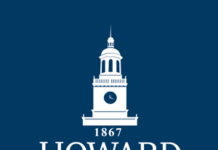 Nationwide, the racial gap in college graduation rates has remained constant at about 20 percentage points over the past 20 years. The huge racial gaps in income and wealth coupled with a lack of sufficient financial aid are undoubtedly a major reason why Black students face a more difficult time in completing their degrees than Whites.
Nationwide, the racial gap in college graduation rates has remained constant at about 20 percentage points over the past 20 years. The huge racial gaps in income and wealth coupled with a lack of sufficient financial aid are undoubtedly a major reason why Black students face a more difficult time in completing their degrees than Whites.
Financial factors are undoubtedly a major factor in the low graduation rates at many of the nation’s historically Black colleges and universities. Despite these factors that tend to put a drag on graduation rates, many HBCUs have made tremendous progress in recent years in increasing the graduation rates of their African American students. The chart below tracks the Black student graduation rate at large group of HBCUs during the 1998-to-2011 period.

For example, in 1998 the Black student graduation rate* at Howard University in Washington, D.C., was 47 percent. Today, the latest graduation rate figures shows that 64 percent of entering students at Howard earn their degree within six years. This is an impressive 17 percentage point gain. At Jackson State University in Mississippi and Virginia Union University in Richmond, the Black student graduation rate has improved 11 percentage points since 1968.
Alabama A&M University, Delaware State University, Fort Valley State University in Georgia, and Virginia State University all show an 8 percentage point increase in their Black student graduation rate since 1998. At Spelman College in Atlanta and Paine College in Augusta, Georgia, there has been a 7 percentage point improvement.
At some HBCUs, such as Prairie View A&M University in Texas, the University of Maryland Eastern Shore, Tennessee State University, and Lincoln University in Missouri, there was a significant increase in the Black student graduation rate from 1998 to 2006. But since that time, perhaps due to the difficult economic times since 2008, the Black student graduation rate has decreased.
Other HBCUs have shown a downward trend since 1998. The Black student graduation rate at seven HBCUs has dropped by 10 percentage point or more in the 1998-to-2011 period. The HBCUs in the group surveyed by JBHE with the largest decreases are Rust College, Lincoln University of Pennsylvania, Mississippi Valley State University, Fayetteville State University, Grambling State University, Shaw University and Florida A&M University.
* The graduation rate is calculated by comparing students who entered an institution in a given year with those who earned their bachelor’s degree from the same institution within six years. To avoid statistical anomalies for any particular year, graduation rates reported here are a four-year averages.











None of the above graduation rates are anything to brag about.
Howard University has made significant improvement in its graduation rate.
Parents, schools, community, support groups should be actively involved in the education of our students from birth to graduate school.
In some academic disciplines there is a perceived lowering of student academic expectations at many HBCU’s. In other words there is a “dummying down” situation occurring. This hurts the students more than anyone else. You have grade inflation at many U.S. universities. Most importantly the quality of African-Americans coming out of (if they ever graduate) U.S. high schools is shameful at best. So many are ill prepared for college, trade schools or even life itself.
Since I have sat on academic boards at a few HBCU’s I would audit those numbers for accuracy. In education these days everybody is playing games with numbers-the reason their jobs should be on the line is if they are not delivering a quality education to our students.
Remember there are some really sharp African-American students out there but that is the exception not the rule.
Two Items:
1) Where is Hampton?
2) Money! I suspect that one reason for these dismal results is lack of funding that is available or can be provided by these schools. Lack of funding prevents the hiring of quality professors and administrators AND lack of funding prevents schools for providing adequate financial aid. Why won’t some of these very small HBCUs consider combining their resources and create some efficiencies. Perfect example – Central State & Wilbeforce. The two are virtually located next to each other. Why not one combined university?
a brief look at the chart shows that nearly as many have declined – almost 1/2 . A basic knowledge of stat would highlight the fact that the title of the article is a complete falsehood . Seriously, this article is laughable… The author should be embarrasseed – the statistics presented are abysmal… -black student
The article highlights those HBCUs that have shown improvement. Obviously, we are well aware that many HBCUs showed a decline in their graduation rates and this is clearly shown in the chart we published. Why is the article laughable and embarrassing? We are simply presenting the facts. We all wish that graduation rates at HBCUs were higher, but it is important to point out that many HBCUs are making progress.
I’m very familiar with several of the schools on this list and what stuck out to me was that their graduation rates were roughly equal to the cumulative ACT/SAT percentiles for their incoming freshmen. I don’t know if there is a similar correlation amongst all HBCU’s but the it’s interesting to note the relationship.
GE Diego asserted that HBCU’s “dummy down” their instruction, it’s not that simple. Incoming HBCU students tend to enter college with lower academic abilities than peers at other 4-year colleges so the instruction needs to be more basic. I don’t think it’s fair to expect HBCU students to make larger gains in academic ability than peers at other institutions.
A larger problem is grade inflation at HBCU’s. Students need to keep certain GPA levels to recieve scholarship money and schools often try to help them from administrative offices rather than tutoring and counseling sessions.
The article states that the poor graduation rate is “undoubtedly” caused by financial factors twice but doesn’t attempt to support this statement. As such, the statement shouldn’t have been included in the analysis.